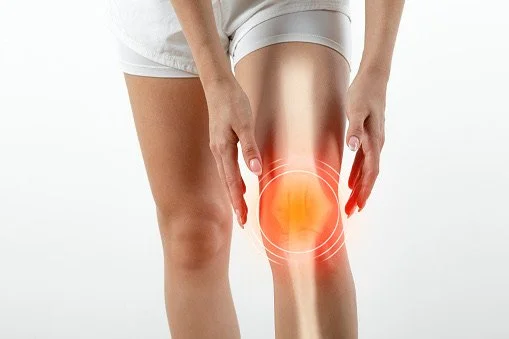#188 - Respond To Pain, Don’t Ignore It; Health Tips For Running
Running tip number 12 is for runners who are just getting started. Coach Tadris Parker has personally tested this recommendation and a hundred other health tips commonly shared in the running and fitness world. Listen to the audio clip below to hear his take on this one piece of health advice: “Respond to pain, don’t ignore it.” Learn all about this at Keep Calm and Run To The Best You!
“You must listen to your body. Run through annoyance, but not through pain.” —Dr. George Sheehan
Tip 12. Respond to Pain, Don’t Ignore It (running)
Regular exercise is very good for your body, but overdoing it could cause a major setback. Ignoring an injury can lead to permanent damage so do not take pain lightly. Your pain could be soreness or it could be something more serious. Read on to learn more!
Pain vs. Progress - Learn The Difference
Exercising will cause you discomfort at some point. It’s part of having an active lifestyle. Just as the old mouthwash commercial said: “If it burns, it’s working!’ Some call it a burn and others call it sore muscles but that temporary discomfort we feel from running is a necessary evil. You should know the difference between post-workout discomfort and true pain, which is a sign of injury or another serious condition.
‘Good Pain’ and ‘Bad Pain’
Experts at Johns Hopkins help to clarify ‘good pain’ versus ‘bad pain’ for athletes. Two doctors co-authored this article to help athletes to understand the difference. Here is something to keep in mind when you feel discomfort during your workout: Good pain will be noticeable, but not debilitating. It shouldn’t hinder your performance in sports or fitness. It shouldn’t last long after your workout. If you’re struggling with pain that lasts after two days of resting, it’s probably not the good kind of pain.
Why Does Exercise Cause Pain?
The human body was created to be resilient and in many ways, self-healing. We should be aware of what’s going on inside when we’re running and working out. Heel pain, leg pain, and shin splints are common for a beginner-level runner. The key is having wisdom to know when it’s time to rest, and how to treat the pain, and when to seek medical attention.
When we subject ourselves to short stints of physical stress, our body responds by strengthening itself. Bones build up their density in a process called remodeling. Jumping strengthens hips, making women less at risk for osteoporosis, as shown in a 2015 study. Likewise, muscles build up in tone and strength when we lift weights or train using our own body weight, such as with running. Our bodies need time to respond to new stress, so you’re going to have more pain if you do too much at once. You’ll also feel some discomfort when using new muscle groups, or using them in a different way. This is normal and you want to push through that discomfort. This is part of the process of reshaping your physical body.
Types of Injuries and Health Conditions From Exercise
If your pain is lasting longer than it should or it’s affecting your exercise or even simple movements like walking, seek medical attention. Do not push through the pain if you feel sharp cramping or severe soreness that won’t subside after rest. Your body will signal to you if something is wrong so you shouldn’t ignore the signs. Once you become familiar with normal soreness ( the “good pain”) from exercise, it will be easier to tell if something more serious is happening.
Here are some common injuries and health conditions that athletes contend with:
Stress fractures
Cartilage
Aching joints from lost cartilage or fluid build-up
Internal inflammation and external swelling
Tendonitis
Sprains
Fractures
Broken Bones
Listen to Your Body and Respond Accordingly
Remember, if it burns, it’s working! Push through the discomfort if you’re feeling sore but be mindful if your pain is severe or last longer than a post-workout burn should. We want you to be resilient and unstoppable in your running journey but we don’t want you to ignore symptoms of an injury. Be conscientious while running and listen to your body! Self-awareness is essential to Keep Calm and Run To The Best You.
Hit 30, 60, or 90 miles each month with Coach Tadris Parker
Coach Tadris is hosting a seasonal virtual run/walk challenge. No matter where you live or what level of fitness you practice, take a step to join the next seasonal challenge and get yourself moving more. Participants aim to reach 30, 60, or 90 miles every month for three consecutive months. It’s easier than you think when you’re motivated and partnering up with a group. Upload your daily miles to the online results page and see how you stack up. Collectively, participants work to hit milestones set for the team. Now is the time to plan for a spring fling with running!
Thank you for reading.
If you would like to help support our work, you can become an Patreon today.
At Keep Calm and Run To The Best You, we are actively helping people from all walks of life to get healthier and happier in the body they’ve got! We’ve collected advice from professionals, combed through archives, and gathered insights from our group members. Click here to see the rest of our 101 health tips about running, intermittent fasting, and weight loss.
Train for your next running event
Coach Tadris Parker trains athletes at all levels for local or virtual running events.
Email coachtadris@gmail.com with questions about our Run/Walk Club, running events, or health programs.
If you’re serious about running or walking to improve your overall health, join our Run/Walk club and let’s do this together!



